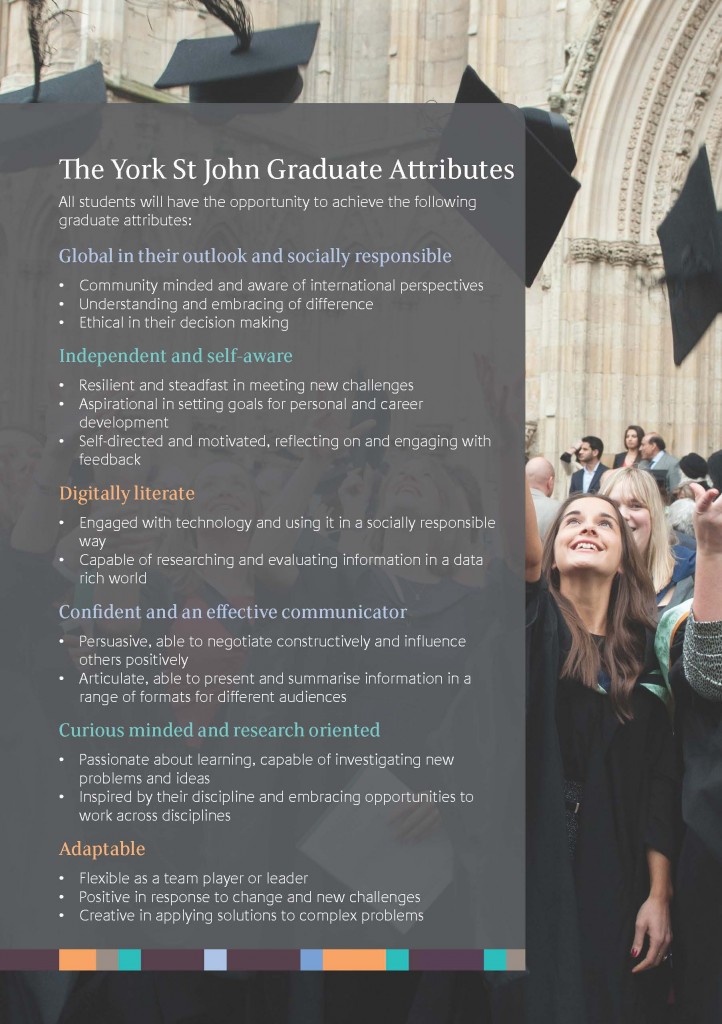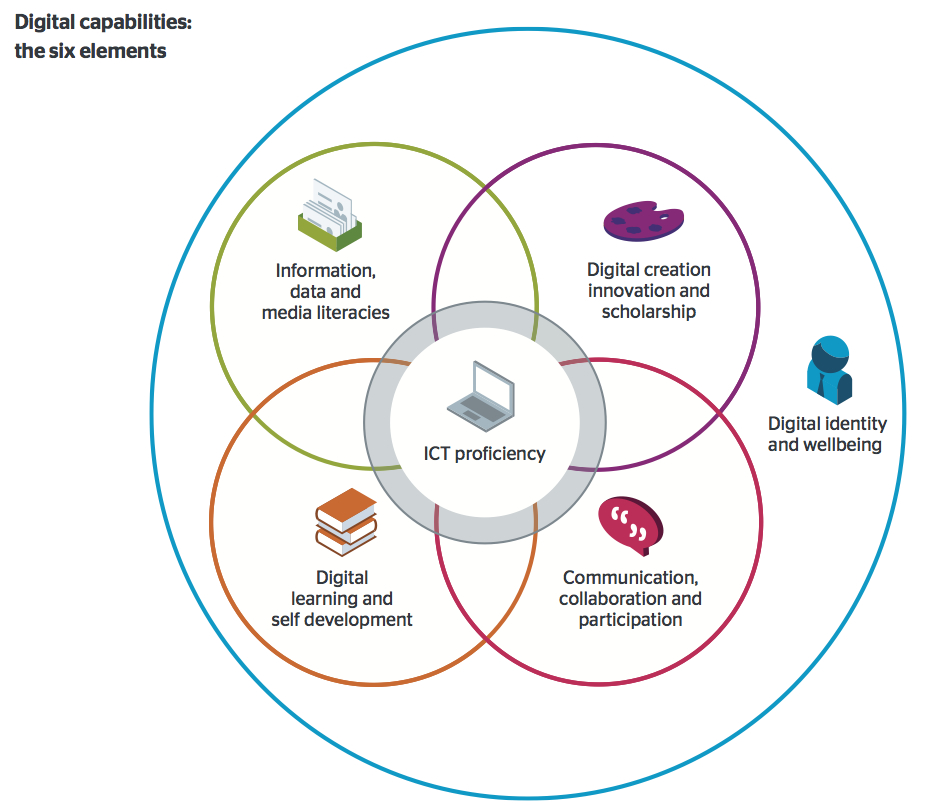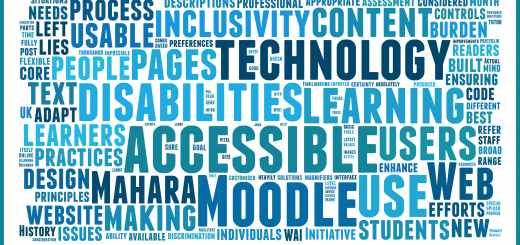Spotlight on Digital Capabilities II: Developing Student Digital Capabilities
Graduate Attributes
From September 2016, all new and revalidating programmes will be required to demonstrate how they provide opportunities for students to achieve the Graduate Attributes. All York St John University students will have the opportunity to achieve the following Graduate Attributes:
Framing Digital Capabilities
Digital Literacies, also known as Digital Capabilities, can be defined as the skills and/or competencies required for living, learning and working in a digital society. The Jisc Digital Capability Framework provides a structure to help individuals understand what skills are needed and supports the development of staff and students. Jisc have produced an initial model of the framework which describes digital capability as six overlapping elements (below).
For a more comprehensive definition of each of these six core elements see our blog post Spotlight on Digital Capabilities I: What are Digital Capabilities?
“Effective use of digital technology by university and college staff is vital in providing a compelling student experience and in realising a good return on investment in digital technology.” (Jisc, 2015)
Even today’s students need support with some areas of digital capability, particularly in an academic context, so it’s important to make sure that these needs are met.
Jisc have developed a Student ‘Lens’ on the Digital Capability Framework [PDF], which provides us with a baseline, or benchmark, for student Digital Literacy. From here we can begin to think about what it means to be digitally literate within each Faculty, Department or Programme, and how we can embed these attributes, skills, practices and behaviours into the curriculum.
Jisc have also recently begun mapping the six elements of Digital Capability to their 7-dimensional model for the ’employable student’, which was presented in their recent ‘Technology for Employability‘ report:

Click for more info: JISC mapping of six Digital Capability elements to their 7-dimensional model for the ’employable student’
Developing successful staff-student partnerships will be paramount to the successful embedding of the Digital Capability Framework. The curriculum is the main focus of students’ attention and driver of effort so is potentially the best route to showcase and develop digital practices.
In order to embed digital capabilities in the curriculum, staff need to be engaged and will need continued support and development as the practices they model will become examples for students. Through engagement with this Framework and active consideration of what and how staff use technology to facilitate learning and teaching, they will also be aligning their practice to the UK Professional Standards Framework (UKPSF), and elements of the Vitae Research Development Framework (RDF).
We’ll talk more about Academic Digital Capabilities and Researcher Digital Capabilities over the next couple of blog posts…
What do you think of the student ‘lens’ on digital capability? What programme-specific capabilities would you need to add to the baseline for your students? What are the barriers/enablers to developing student digital capability? Let us know in the comments below…
For help, information or advice about Digital Capability, or to discuss any questions, comments or concerns you might have, please contact TEL@yorksj.ac.uk.
Phil
Reference
Jisc: Building Digital Capability https://www.jisc.ac.uk/rd/projects/building-digital-capability




